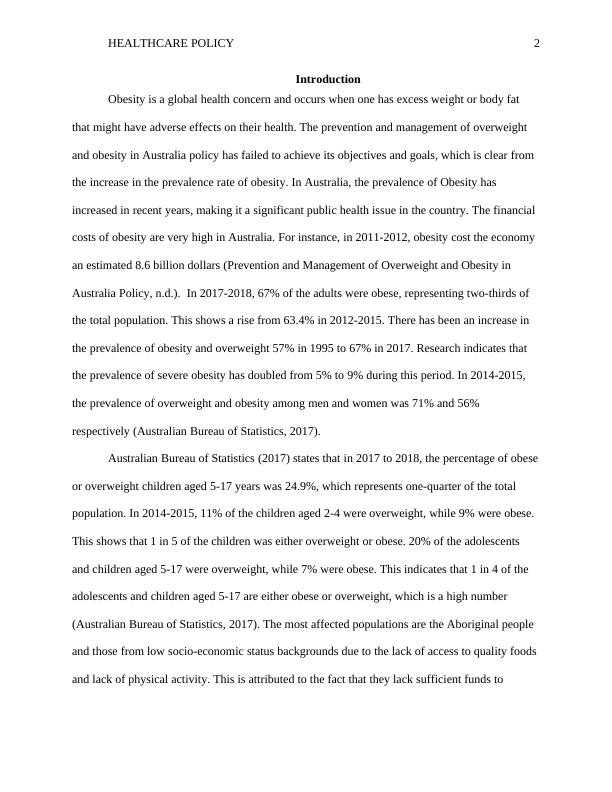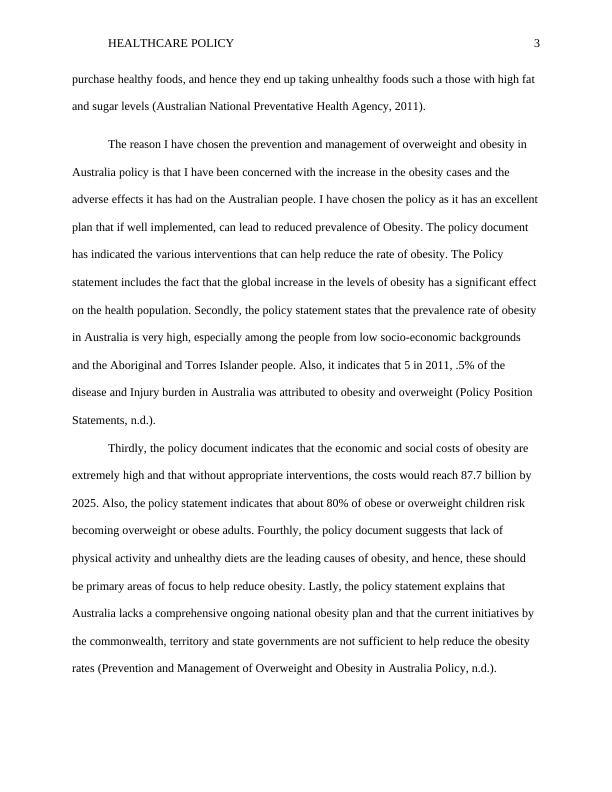Prevention and Management of Overweight and Obesity in Australia Policy
16 Pages4351 Words1 Views
Added on 2023-01-11
About This Document
This policy aims to prevent and manage overweight and obesity in Australia through various interventions and strategies. It addresses the high prevalence of obesity in the country, the economic and social costs associated with it, and the lack of a comprehensive national obesity plan. The policy suggests measures such as creating a National Obesity Task Force, regulating unhealthy food advertisements, increasing taxes on sugary drinks, and promoting physical activity and healthy eating guidelines.
Prevention and Management of Overweight and Obesity in Australia Policy
Added on 2023-01-11
ShareRelated Documents
End of preview
Want to access all the pages? Upload your documents or become a member.
Child OBESITY AND ITS MEASURES HEALTHCARE
|16
|769
|16
Childhood Obesity in Australia
|13
|3262
|28
Prevention of Overweight and Obesity:
|8
|1578
|16
Weight Loss Industry in Australia: Trends and Future Predictions
|17
|677
|307
Obesity Prevention in Children and Youths in a Community Setting
|11
|2929
|145
Obesity among People with Low Socioeconomic Status
|12
|2890
|68




